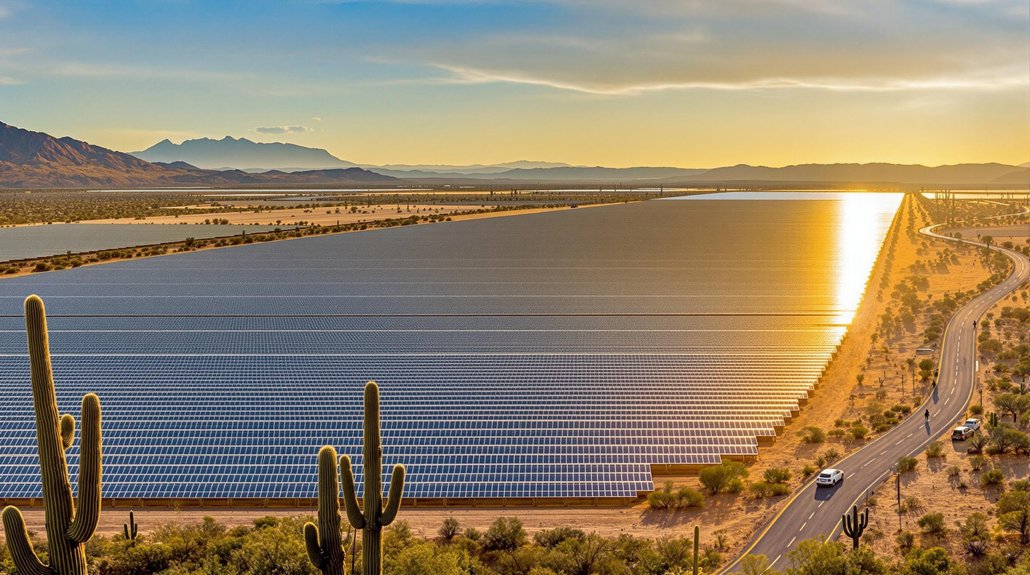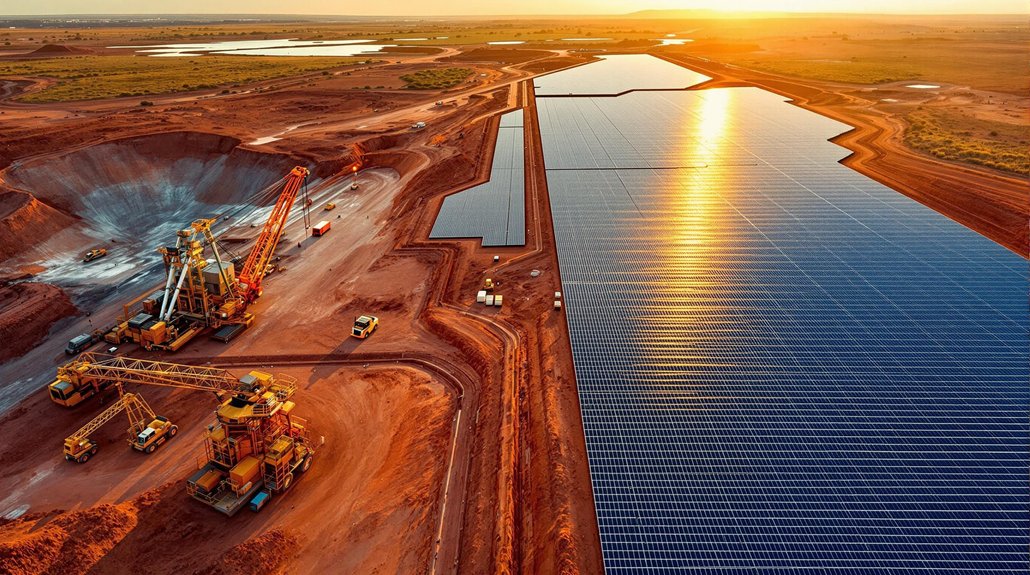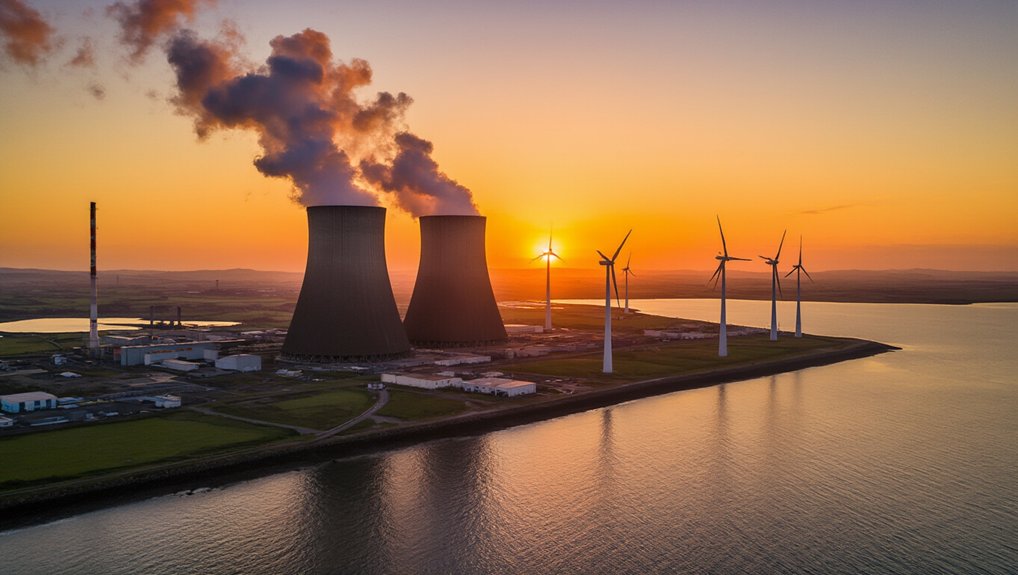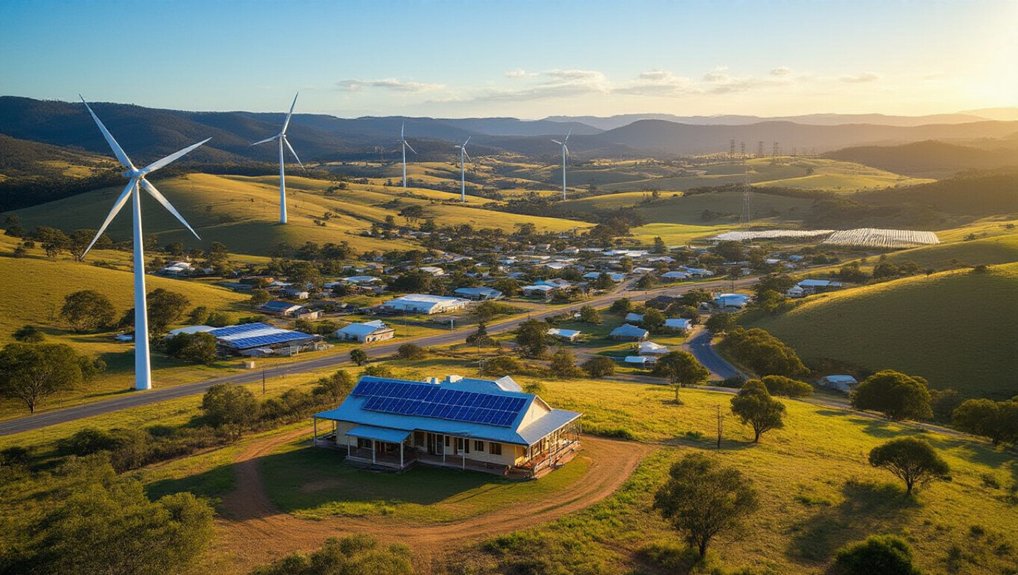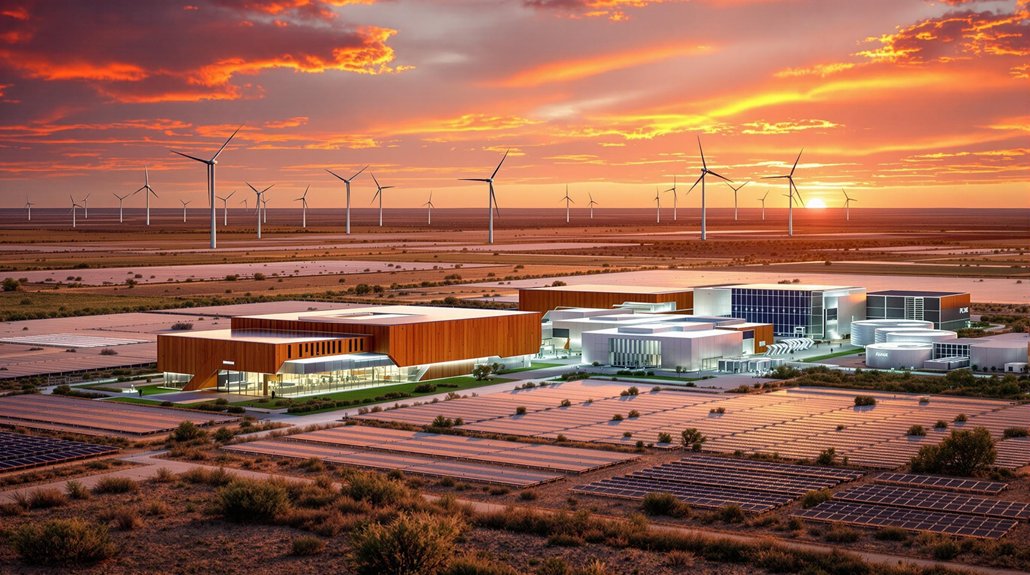Cochise County is rapidly developing solar projects, but financial gain trumps environmental concerns. Officials openly chase tax revenue and economic investment, with projects like Three Sisters bringing $259 million and $34.1 million in taxes. Construction creates temporary jobs, though few permanent positions remain afterward. The county fast-tracks approvals and has flexible standards for solar farms. Environmental benefits? Nice bonus, but not the point. The money tells the real story.
As Arizona’s sun beats down relentlessly on the desert landscape, Cochise County is finally cashing in on its most abundant natural resource. Solar projects are popping up faster than cactus flowers after a rare desert rain. The 20-megawatt Apache Solar 1 farm is already humming along, but that’s just the appetizer before the main course arrives.
BrightNight’s Three Sisters Solar Project and Clenera LLC‘s massive development at Apache Station are about to turn Cochise into a veritable solar powerhouse. We’re talking serious juice here—300 megawatts from Three Sisters and another 294 megawatts from Clenera. Plus, a hefty 940-megawatt battery storage facility. Because what good is all that energy if you can’t save some for a rainy day? Not that Cochise has many of those.
The money talks. Three Sisters alone promises $259 million in economic investment over its lifetime. Tax revenue? $34.1 million. Construction jobs? 250 of them. Sure, only 3-5 permanent jobs afterward, but hey—robots don’t complain about the heat.
County officials aren’t exactly hiding their motivations. Their policies explicitly support renewable energy development with flexible site standards and employment training programs. It’s not about saving polar bears—it’s about saving the county budget. These projects align perfectly with the national trend where solar power now constitutes 64% of capacity added to electricity generation in 2024.
Space isn’t an issue. A University of Arizona study identified 770,000 acres suitable for small-scale solar and another 640,000 acres for large projects. That’s a lot of panels.
The bureaucratic hoops are there—Certificates of Environmental Compatibility, Special Use Permits, public hearings. But when there’s money on the table, paperwork has a funny way of getting processed.
For residents, there are informational notices and open houses. The county promises to listen to “collective voices and unique opinions.” Translation: they’ll nod politely while counting future tax dollars. Sierra Southwest Cooperative Services has been a pioneer in the area since commissioning year: 2017 with their ownership of existing solar infrastructure.
The Three Sisters project will remove an impressive 527,977 metric tons of carbon emissions annually, though that environmental benefit seems more like a bonus than the primary motivation for development.
As Cochise County rebounds from the Great Recession, solar energy represents more than clean power—it’s economic salvation with a side of sustainability. Sometimes the greenest initiative is the one that puts green in your pocket.
